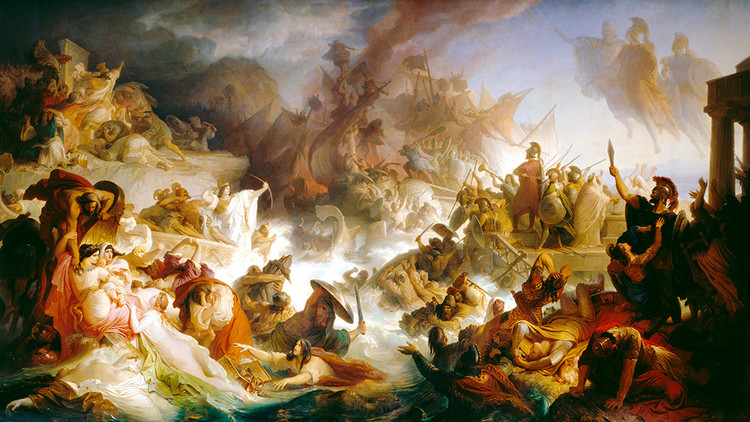
- This event has passed.
Search: Colloquium 34 (Spring 2020)
April 24, 2020 @ 1:00 pm - 1:50 pm
The Sea Battle at Salamis by Wilhelm von Kaulbach
Oil on canvas
1868
(H: 560 × W: 980 cm)
Bayerischer Landtag, München
Reading
Christine de Pizan, Book of the City of Ladies, 1.1-10, 14, 30, 43-48
Topic of Discussion
Rosalind Brown-Grant writes about Christine de Pizan’s work:
Christine’s efforts to give her text authority would have come to nothing if she had not been able to derive the bulk of her pro-woman material from well-known and authoritative sources. To be sure, she does sometimes quote from her own experience in the City of Ladies, for example when she attacks the misogynist claim that women are prone to gluttony or avarice by stating that she knows plenty of abstemious and generous women whose example disproves these charges (I.10 and II.66 respectively). However, Christine was well aware that the oral testimony of one woman would not be enough to outweigh the written testimony of countless male authors. The only way that she could offer a persuasive defense of her sex was by showing that selective quotation was a game that two could play. Christine therefore plunders the misogynists’ favourite scriptural and classical authorities in order to come up with a mass of examples that support her thesis (i.e., that neither virtue nor vice is the prerogative of one sex to the exclusion of the other) against theirs [Christine de Pizan, Book of the City of the Ladies, translated by Rosalind Brown-Grant (New York: Penguin, 1999), 572 (Kindle edition)].
In other words, Christine de Pizan had developed such a mastery of the theological, scientific, and literary tradition that she was able to draw on authoritative sources to support her perspectives, an ability we have been working toward this year. Now, it is time for you to demonstrate how well you can recognize her use of sources not just in the content but in the form of her presentation. Come to class prepared to discuss three instances where she has drawn on sources familiar to you either in the discussion of a particular concept, the depiction of a figure, or the way she organizes and presents her arguments. Be sure to have the citations for your sources at hand and bring the texts themselves to class for further consultation.
[mepr-show if=”rule: 8918″]
Connecting to the Colloquium
Join Zoom Meeting: https://rhodes.zoom.us/j/91605716257
Dial by your location
+1 646 558 8656 US (New York)
+1 312 626 6799 US (Chicago)
+1 301 715 8592 US
+1 346 248 7799 US (Houston)
+1 669 900 9128 US (San Jose)
+1 253 215 8782 US
Meeting ID: 916 0571 6257
Find your local number: https://rhodes.zoom.us/u/ar8T0oZHO
[/mepr-show]
